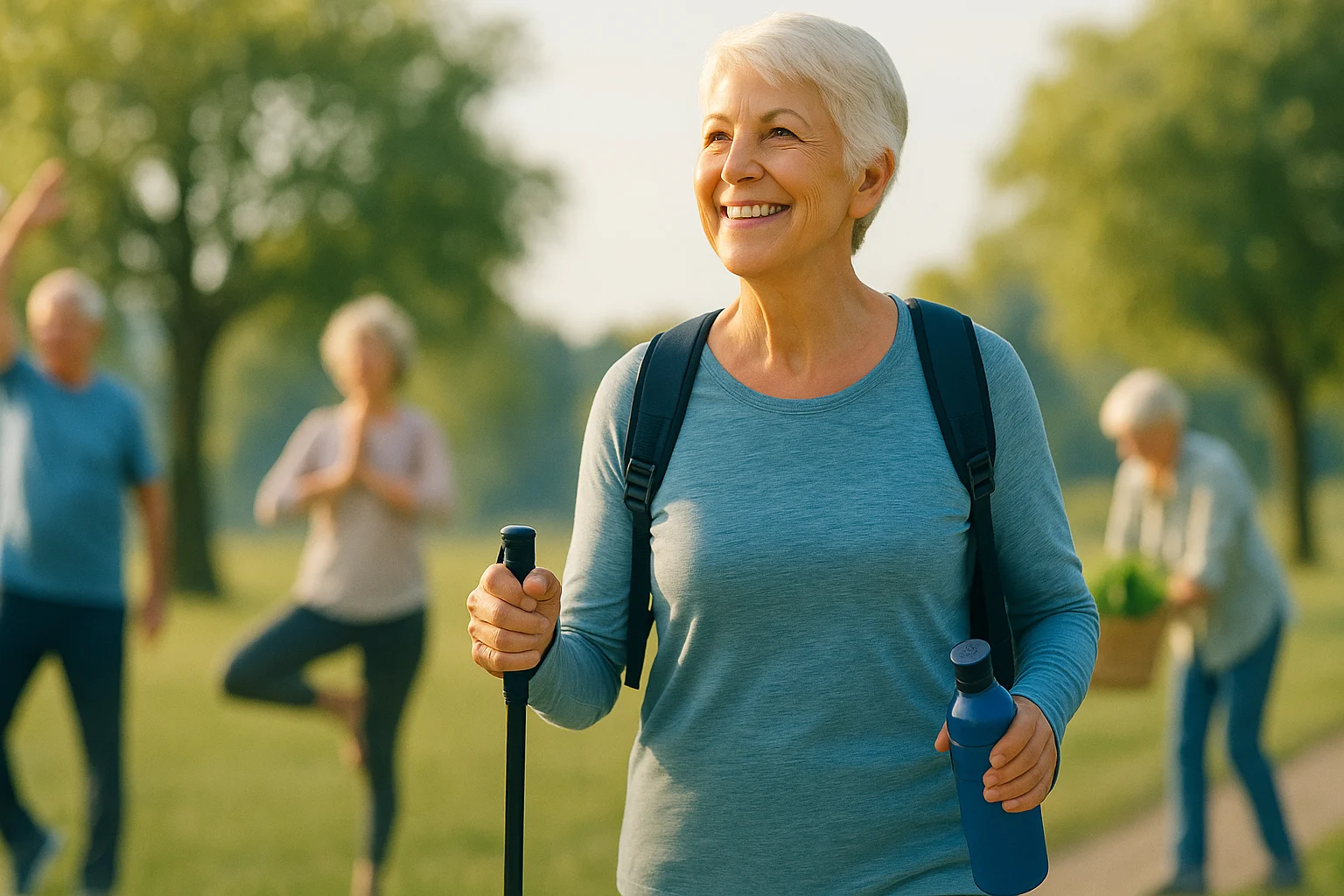

Bones are living tissue, constantly renewing through breakdown and rebuilding. Peak bone mass occurs by age 25–30, then gradually declines—accelerating around menopause due to reduced oestrogen.
Osteoporosis literally means ‘bones with holes’: bones lose density and become fragile. Many people don’t notice until a fall causes a fracture—so prevention and early detection are vital.
Aim for 1,000 mg/day (under 50s) or 1,300 mg/day (women over 50, men over 70) from dairy, fortified plant milks, leafy greens or supplements if dietary intake is low.
Crucial for calcium absorption. Australians need safe sun exposure and may require 800–1,000 IU/day in winter or if deficient.
Adequate protein (0.8 g/kg body weight) supports bone matrix. Nutrients like vitamins C, K, magnesium and trace minerals are also important.
Brisk walking, dancing, gym work and light weights 3–5 times weekly help maintain or improve bone density.
Activities like Tai Chi or Pilates reduce falls risk by improving posture and coordination—key in preventing fractures.
Certified physiotherapy or exercise physiology programs are essential for frailer older people with high fall risk.
Smoking impairs bone‑building cells; more than two drinks/day increases fracture risk
More than 2–3 cups of coffee or cola can impact calcium absorption
Remove trip hazards, install handrails, improve lighting and wear sturdy shoes
Regular reassessment and periodic scans guide ongoing management.
Prescribing depends on fracture risk, BMD scores, prior fractures or steroid use ().
First-line treatments to slow bone loss and reduce vertebral, hip and non‑vertebral fractures.
For high-risk individuals; must be continued or followed by bisphosphonate to avoid rebound vertebral fractures.
Anabolic therapies for very high-risk cases—romosozumab builds bone, teriparatide stimulates new bone formation.
Considered for postmenopausal women within 10 years of menopause; alternatives include raloxifene for spinal bone loss.
Q1: At what age should I start thinking about osteoporosis prevention?
A1: Ideally from young adulthood. Peak bone mass is reached by age 30. After that, focus shifts to maintenance and slowing bone loss.
Q2: Are supplements enough to prevent osteoporosis?
A2: Supplements (calcium + vitamin D) can help, but only when dietary intake or sun exposure is inadequate, and especially helpful when combined with exercise.
Q3: Will exercise alone stop osteoporosis progression?
A3: Exercise strengthens bones and balance, but those with established osteoporosis often need medications to significantly reduce fracture risk.
Q4: What side effects do osteoporosis medications have?
A4: Bisphosphonates may cause GI upset or very rarely jaw issues. Denosumab requires follow-up to avoid rebound fractures. Anabolic agents are generally used short-term under specialist care.
Q5: Can osteoporosis be reversed?
A5: Full reversal isn’t possible—but bone density can stabilise or improve, significantly reducing fracture risk with proper treatment.
This article is an educational resource. It outlines general strategies based on reputable medical sources. If you need personal advice or prescription medication, consult your GP or specialist. Any mention of treatment options is factual and avoids sensational claims. No unauthorised comparisons or implied superiority of specific treatments are made.